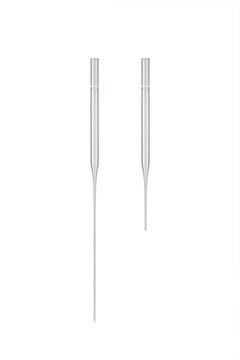Z627992
Pasteur pipettes
short capillary tip, approx 2 mL withdraw volume, soda-lime glass
Synonim(y):
Automatic pipettes
About This Item
Polecane produkty
Materiały
soda-lime glass
agency
suitable for EPA 1613
sterylność
non-sterile
Właściwości
graduations: no
opakowanie
pack of 1000 ea
producent / nazwa handlowa
BRAND 747715
pojemność
~2 mL
końcówka dł. × śr. wewn. × śr. zewn.
45 mm × 1.0 mm × 7 mm
Szukasz podobnych produktów? Odwiedź Przewodnik dotyczący porównywania produktów
Opis ogólny
Zastosowanie
- to transfer supernatant to high performance liquid chromatography (HPLC) vials in sample enrichment process for studying the impact of pesticide application in agriculture on groundwater quality.
- in the process of adjusting concentrate and transfer during sample preparation via vacuum-assisted evaporation.
- to prepare a packed column with silica or Celite for GC sample preparation.
Inne uwagi
Informacje prawne
Certyfikaty analizy (CoA)
Poszukaj Certyfikaty analizy (CoA), wpisując numer partii/serii produktów. Numery serii i partii można znaleźć na etykiecie produktu po słowach „seria” lub „partia”.
Masz już ten produkt?
Dokumenty związane z niedawno zakupionymi produktami zostały zamieszczone w Bibliotece dokumentów.
Klienci oglądali również te produkty
Powiązane treści
This page is intended to make it easier to find the consumables you need based on the analytical method you’re using. Methods included on this page come from the EPA, Standard Methods and ASTM.
Nasz zespół naukowców ma doświadczenie we wszystkich obszarach badań, w tym w naukach przyrodniczych, materiałoznawstwie, syntezie chemicznej, chromatografii, analityce i wielu innych dziedzinach.
Skontaktuj się z zespołem ds. pomocy technicznej







